Family of Wine — How a Creative Son Keeps the Pisonis’ California Legacy Going
We're Talking Grapes With Jeff Pisoni
BY James Brock // 12.28.20
Jeff Pisoni grew up among the vines, and his approach to winemaking is one I respect and admire. (Courtesy Folsom + Associates)
I love to talk about wine with people who share my passion for it. We open bottles, we trade stories about travel and soil types, terroir and residual sugar, and we talk of taste and food and restaurants. We recommend wines to one another, we drink, and we learn a lot.
In Wine Talk, I introduce you to some of my friends, acquaintances, and people I meet as I make my way around the world, individuals who love wine as much as I do, who live to taste, who farm and make wine. You’ll appreciate their insight, and I hope you’ll learn something from them as well.
Pisoni is a name that needs no introduction — especially to lovers of wine. First, there’s Gary Pisoni, who, back in the 1980s, convinced his farming family to plant grapes on their land in the Santa Lucia Highlands. Those hallowed 40 acres of vineyards have been producing great fruit — syrah, chardonnay, and, of course, pinot noir — since then.
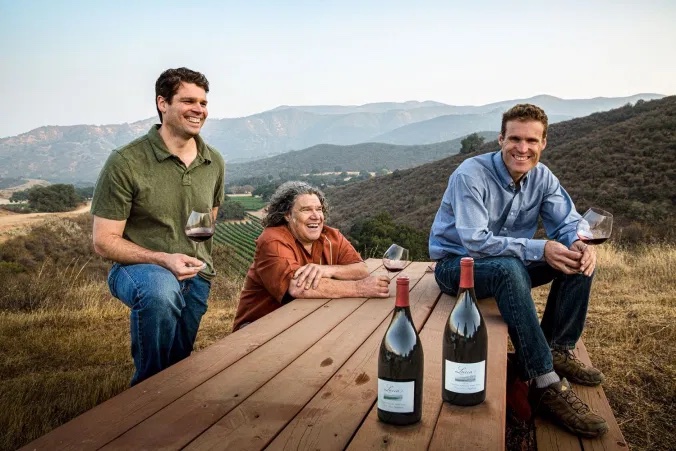
And it is a family affair, which brings me to the subject of this Wine Talk, Jeff Pisoni, Gary’s son and Pisoni Estate’s vintner. (Jeff’s brother, Mark, is vineyard manager at the estate.)
Jeff, who has a bachelor of science degree in enology from Cal State, Fresno, worked at Bernardus and Peter Michael prior to joining the family concern. Since 2009, he has also been head winemaker at Fort Ross Vineyard & Winery, about which he says, “I’m not trying to make a style. Fort Ross Vineyard is the style.”
Fort Ross is the sole winery Pisoni works with apart from his family enterprise. The vineyard, the closest one to the Pacific Ocean, is in the Fort Ross-Seaview AVA.
“I tried the Fort Ross pinot noir and chardonnay at a tasting and was struck by the luscious fruit, fine minerality and crisp acidity in each wine,” Pisoni says, referring to his introduction to the fruit there. “The cool climate and the strong character of the vineyard were clearly evident.
“My goal is to continue to express the personality of the vineyard and the wonderful style the winery has worked so hard to establish.”
I tasted through a selection of Fort Ross wines recently, including the 2017 Stagecoach Road Pinot Noir and the 2018 Chardonnay, both clearly made with precision and care. Pisoni’s approach is on display here, and it’s one I appreciate and admire.
Let’s see what Jeff Pisoni has to say in Wine Talk:
Tell us about three wines you think are drinking well at the moment. What makes them worthwhile? How about a food pairing for each one?
Jeff Pisoni: 2013 Prager “Steinriegl” Riesling. Wachau, Austria. With the down time from (California’s) shelter in place, I did some organizing in the cellar and opened up this bottle. It was tasting great — fresh, complex and elegant. My wife and I drank this with grilled sole. I purchased this wine upon release for $30.
Next, 2018 Fort Ross Vineyard Chardonnay. This variety can take many forms. Our approach with Fort Ross is bright and vibrant, but still with nice texture from the high-elevation mountaintops. I found it particularly satisfying, as I think a lot of people turn to a reassuring familiarity while being in a shelter-in-place situation in the world. This brings the beauty of California with a refreshing finish. You can get this for $44 a bottle.
Finally, the 2015 Renaissance by Clape. I love this producer. Clape has a way of capturing so much intensity and purity. Weather recently has also been cold and rainy, which I think fits well for a rich syrah. This was paired with a grilled ribeye steak. What else is needed? This wine was purchased for around $75 per bottle.
JB: If cost was no consideration, tell us the one bottle you would add to your personal collection, and why?
JP: Sure! I would buy a 6-liter bottle of 2017 Chateau Latour. It’s my younger son’s birth year and I still need to find a bottle for him. Might as well go big, right? As a backstory, my father gifted me a 6-liter birth year bottle of Chateau Latour, 1979. (And yes, Bordeaux was a little cheaper back then!) I have not opened it, yet.
JB: What is your favorite grape, and why? If you can’t single out one — I know, it’s difficult — choose one that speaks to you in a particular way.
JP: Right, it’s hard to choose a favorite, but I am extremely passionate about pinot noir. Yes, there is the beauty and enigmatic nature of it, the fine balance between amazing and mediocre, the multitude of elusive nuances. I am also really drawn to challenges, and nothing challenges one’s winemaking skills like pinot noir.
JB: How about one bottle that our readers should buy now to cellar for 10 years, to celebrate a birth, anniversary, or other red-letter day?
JP: Our Fort Ross Vineyard “Top of Land” Pinot Noir cuvée. It’s a wonderful combination of pinot noir’s power and elegance.
The wine blend is of specific blocks and mostly heritage clones. It really conveys the essence of what Fort Ross Vineyard is about. The structure comes from the rugged mountain soils of our high-elevation sites, while the elegance is from the coastal climate that is only possible from a vineyard like this, at one mile from the Pacific Ocean. Overall, it has a great depth of flavor and structure that will age well for 10-plus years in the cellar.
This wine also speaks to the history of the vineyard. First planted by Linda and Lester Schwartz in 1994, the vineyard in total is 50 acres, but made up of over 30 unique blocks. Each block has its own personality. This wine, being a block selection, shows unique aspects of the vineyard and also the idea that Linda and Lester wanted to explore this detail of the vineyard.
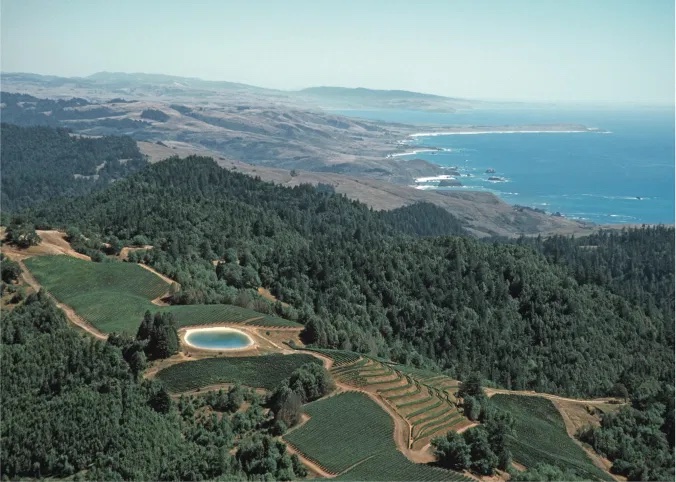
JB: Where is your go-to place when you want to have a glass or bottle?
JP: There is a great restaurant here in Santa Rosa called Stark’s Steak & Seafood. It has a fantastic wine list and a great bar scene in the evening. It is a wonderful atmosphere for a relaxing glass of wine and/or dinner. When you are in Sonoma County, check it out (post-pandemic, of course).
JB: If there was one thing you wish everyone would keep in mind when buying and drinking wine, what is it?
JP: I hope that if people have a chance, they will buy a wine for drinking early and a bottle (or more) for aging. It’s fun and educational to watch the evolution of wines. It also gives you more bottles and opportunities to taste, evaluate, and discuss. I enjoy collecting things in general, so I always default to saving wines for a long time.
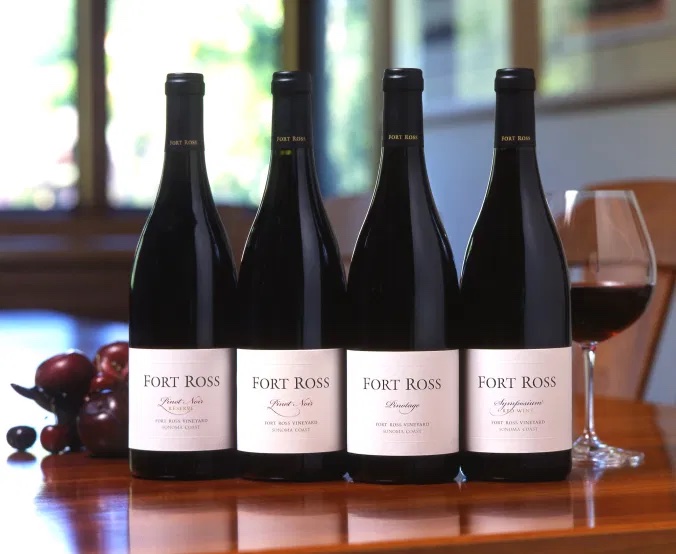
JB: What is your “wine eureka moment,” the incident/taste/encounter that put you and wine on an intimate plane forever?
JP: Blind tasting wine with my father when I was a teenager. My father was instrumental in me deciding to be a winemaker. He was a farmer turned grape grower turned winemaker — and a viticultural pioneer.
He had a vast wine collection he started in the 1970s, and he would often open wines and introduce them to my brother and me. We loved the learning and experience of the different wines and regions. Well, many times, he would open wines and not tell us what it was — he would ask us to guess the variety, region, and vintage.
It was an awesome experience, and very influential for me. In the blind tastings, we obviously had plenty of wrong ideas, but I remember making a few great calls and it brought a very strong connection to wine and the concept of terroir.
JB: What has been the strangest moment or incident involving wine that you have experienced in your career?
JP: One time an intern had filled a 15-gallon stainless steel keg with juice and closed it with a valve. This was during harvest, so it went unnoticed for a few days — long enough for the keg to ferment and build up a lot of pressure. When we tried opening the valve, it plugged with grape solids, so we could not release the pressure. We then had to very, very carefully remove the fitting that held the valve in place. This exposed a 2-inch hole in the top of the keg. In a fraction of a second, a 2-inch vertical stream of wine shot up from the keg and hit our 25-foot-high ceiling. Nearly all the wine was lost to the upward stream, and we all just looked around in awe for a few moments.
JB: What is your favorite wine reference in a work of literature or film?
JP: I grew up in Monterey County, so John Steinbeck was an important author for us. And Cannery Row was a fun read:
“Two gallons is a great deal of wine, even for two paisanos.”
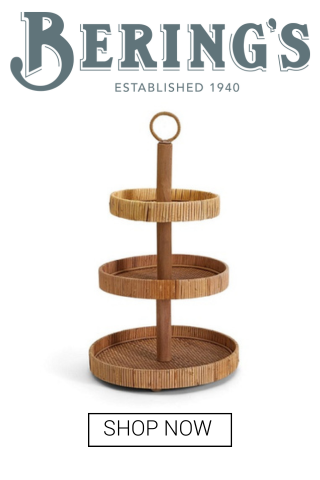


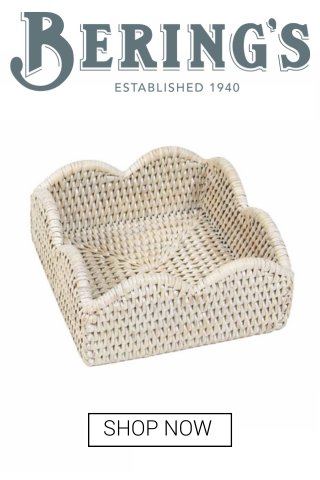




















_md.jpeg)






